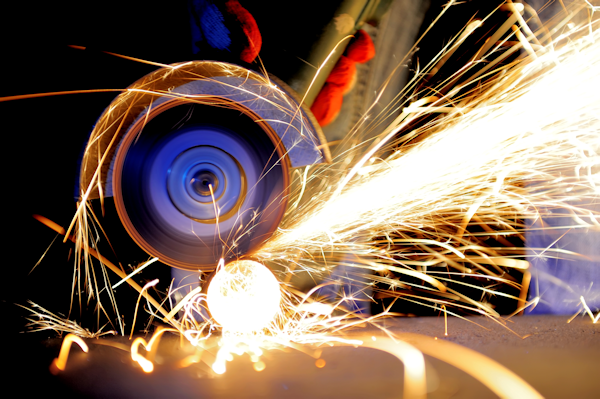Protective Measures
The employer is required by OSHA standards to perform a number of actions to protect workers from caught-in between hazards.
Below is a summary of the requirements:
- Provide guards on power tools and other equipment with moving parts
- Support, secure, or otherwise make safe equipment that has parts that workers could be caught between
- Take measures to prevent workers from being crushed by heavy equipment that tips over
- Take measures to prevent workers from being pinned between equipment and a solid object
- Protect workers during trenching and excavation work
- Provide means to avoid the collapse of structures scaffolds
- Provide means to avoid workers' being crushed by collapsing walls during demolition or other construction activities
- Designate a competent person
- Provide training for workers
Use Properly Guarded Machinery
Moving machine parts have the potential to cause severe workplace injuries, such as crushed fingers or hands, amputations, burns, or blindness. Any machine part, function, or process that may cause injury must be safeguarded.
Hazardous Motions and Actions
Different types of hazardous mechanical motions and actions in varying combinations are required to automate tools, equipment, and machinery. Recognizing the hazards they present is the first step toward protecting workers from the danger these motions and actions present. There are three basic hazardous motions and associated actions that can injure employees when exposed.
Motions
- Rotating - a circular motion around an axis or center such as a rotating shaft.
- Reciprocating - a push-and-pull motion common to saws.
- Transversing - a continuous straight-line movement typical of moving belts.
Actions
- cutting - Cutting action may involve rotating, reciprocating, or transverse motion at the point of operation (circular saws, band saws, drills, etc.).
- Punching - Punching action results when power is applied to a slide (ram) for the purpose of blanking, drawing, or stamping metal or other materials.
- Shearing - Shearing action involves applying power to a slide or knife in order to trim or shear metal or other materials.
- Bending - Bending action results when power is applied to a slide in order to draw or stamp metal or other materials.
- belts;
- gears;
- shafts;
- pulleys;
- sprockets;
- spindles;
- drums;
- flywheels; and
- chains.
For more information on machine safeguarding, see OSHAcademy Course 726, Introduction to Machine Guarding.
Knowledge Check Choose the best answer for the question.
2-1. Which hazardous motion is a push-and-pull motion common to saws?
You forgot to answer the question!

